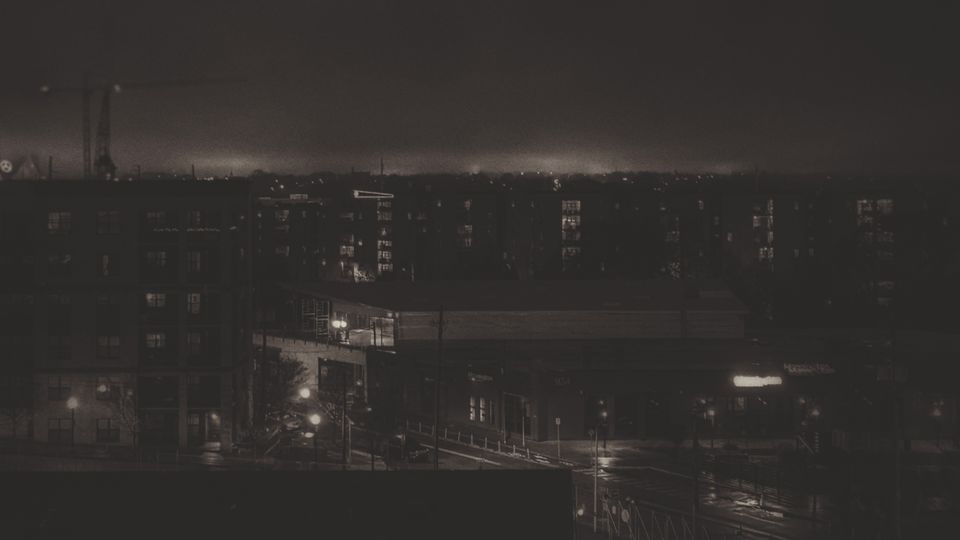Howell Mill's Power Transformer

When a balloon from a nightclub owner’s vigil became entangled with the cables above, the power went out. The blocks downstream of the injured line fell dark in an instant and with the darkness came a fresh silence: no eclectic hum of the fridge or air conditioner, no visual noise from street lights or neon signs.
A forced restart reanimated the region for a moment, lights flickering on, dryers retumbling, microwaves turning, followed by an explosion of light to the west. A thunderous crack of an electric whip echoed as sparks fell in arcs from the blown transformer, and darkness fell once more.
Crowds streamed out from the back door of the bowling-alley-slash-bar down the street, phone screens illuminating frustrated faces, Ubers and Lyfts called en masse to transport the newfound crowds from their now unviable nightlife destination. Others appeared on balconies, assessing the situation, as a news crew spun up a filming location kitty corner from the burnt balloon.
The nightclub owner had been shot the week prior by a family friend, then a drunk customer, who lay in wait in the parking lot. The February sun rose just a half hour after the owner had passed. In his absence, the club announced it would close permanently, its sky-blue zoning application sign ever in an undecided balance.
Ordinance 22-O-1742, to amend the 1982 city of Atlanta zoning ordinance, the new Upper Westside overlay a “a community-driven vision for the district to be a vibrant walkable, bikeable, and safe place for residents, businesses, and visitors.”
Better sidewalks, no pawn shops. Vegetated roofs, barbed wire prohibited.
A neighborhood in flux, pending overlay approval.
And while flashlights flickered on in the sea of apartments without power, one unit persisted in its normalcy: its kitchen chandelier, a miniature, suspended sun, remained lit. Three or four blocks of apartments, restaurants, shops. A post office, a cultural arts center. Bars, coworking spaces, offices, all in the shadow of night, while one penthouse resists.
The light, ever lit, transmitting across the space between complexes. 500 feet and two panes of glass, an irritation that draws the eye, night or day, always illuminated and perpetually uninhabited.
Until tonight, when a single shade was drawn halfway the length of the window, obscuring the light from my view.
